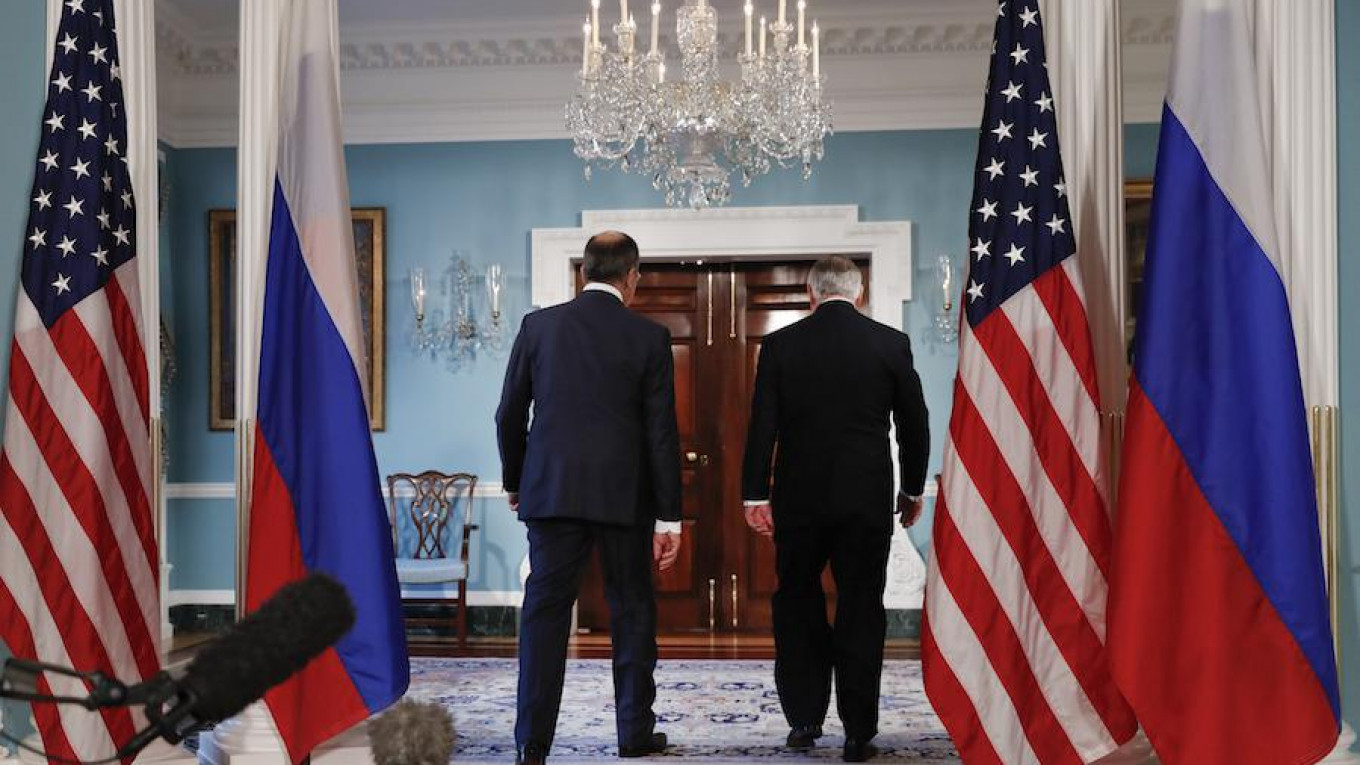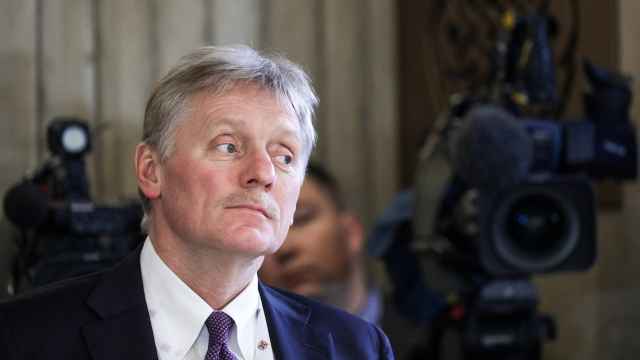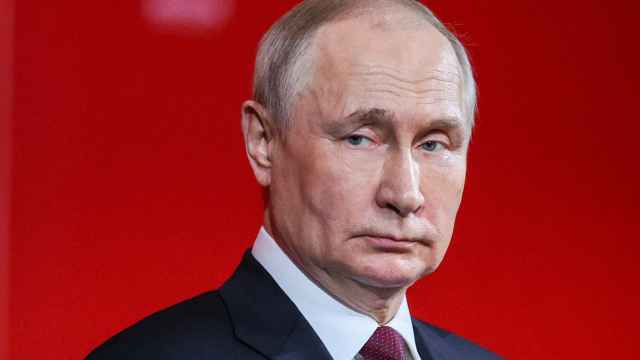U.S. Secretary of State Rex Tillerson is working hard to save what remains of the U.S.-Russia relationship.
He appears to have a mandate from President Trump to see what can be done with Russia. At the same time, however, this “Russia thing” — as Trump describes it on Twitter — makes engaging with Moscow politically poisonous. And this severely limits Tillerson’s options.
Even so, Tillerson plows on, against the current, without much help from either Washington or Moscow.
Tillerson and his policy chief Brian Hook have reportedly drafted a secret three-pronged strategy for normalizing the relationship, to the point where Russia and the United States could at least do business together.
Crucially, Tillerson appears to have won interagency support for his strategy, particularly from Defense Secretary Jim Mattis and the National Security Advisor General McMaster.
McMaster seems happy to delegate the policy lead on Russia to the State Department, even though he has his own star-powered Russia policy shop under Fiona Hill.
Tillerson’s strategy appears to be ambiguous and flexible. It is malleable enough to be rapidly scaled up or down depending its progress, and the response to it.
The strategy does not set any lofty goals. It sticks to a minimalist agenda. But it suffers from the basic flaws that doomed Obama’s 2010 reset with Russia and his 2015 framework, which focused on issues marginal importance to Russia.
The strategy's first pillar, BuzzFeed reports, is to communicate to Moscow that any aggressive moves it makes against the United States — arming the Taliban in Afghanistan, harassing U.S. diplomats, hacking elections — would be met with a forceful push back.
This pillar invites confrontation because Russia will deny its role in any hostility. The Kremlin will also present U.S. officials with a list of what it says are US hostile activities toward Russia.
A meeting of minds is unlikely to be Tillerson’s policy goal. What is more likely is that he will present the Kremlin with what U.S redlines are.
But the United States and Russia have some practical issues to resolve. And finding solutions could prove problematic.
The U.S. appears to be leveraging the return of the Russian diplomatic dachas in Maryland and New York in return for a Russia’s lifting the 2014 bans on building permits for a new U.S. Consulate in St.Petersburg. The United States would also have a Russian commitment end the harassment of its diplomats.
In return, Moscow would demand the U.S. also leave its diplomats alone. Russia would ask for travel restrictions on its diplomats to be lifted and the return of dachas — no strings attached.
Tillerson delegated Deputy Secretary of State, Tom Shannon, a career foreign service officer, to lay the groundwork for the strategy and “clear the wreckage” with Russia’s Deputy Foreign Minister Sergei Ryabkov.
However, Russia canceled that meeting scheduled for June 23 in response to the new sanctions imposed by the U.S. Department of Treasury June 20. Tillerson’s job is not made easier by the new sanctions.
The second pillar of Tillerson’s Russia framework is to try to work together with Moscow on joint interests. They include: ending the war in Syria, defeating ISIS and preventing a nuclear war with North Korea.
These issues are probably most ripe for any agreement that could be made before the time Trump and Putin meet on the sidelines of the G20 meeting in Hamburg next month.
On Syria, despite the angry rhetoric of the last few days, Moscow and Washington are close to an agreement on a de-escalation zone in South Syria. They may also be close to coordinating operations against Islamic State.
On North Korea, the sides are a world apart. Moscow wants a return to the six-party talks to negotiate limits on North Korea’s nuclear and missile programs. The United States wants a complete reversal and elimination of those programs. But for Moscow and China, this is unrealistic.
Moscow sees its recent increase in trade with North Korea diplomatic leverage to influence Pyongyang. Meanwhile, the U.S. threatens sanctions. Still, North Korea is a relatively neutral issue, with the exception of U.S. missile defense deployments in South Korea.
The third pillar of Tillerson’s Russia policy is talks on strategic stability. There is a narrow definition of this term that deals with nuclear weapons and missile defense deployments. These talks ensure that neither side is incentivised to deliver a nuclear strike and is reasonably reassured of its ability to wipe out the adversary in a retaliatory attack.
Tillerson is said to have authorized Shannon to engage on this narrow definition of strategic stability. This is even though there is friction — even hostility — on issues including INF Treaty violations, U.S., European and global missile defense, Russian nuclear weapons and prolonging the New START Treaty when it expires in 2021.
All of that, with the exception of missile defense, is of primary interest to Washington, not Moscow. And it is precisely what Putin disliked in Obama’s reset.
Strategic stability, however, could be defined in broader terms. It could include the rules of engagement between Russia and the U.S. as global powers. This is a pathway for discussing Russia’s favorite topic these days — a new world order.
It is not clear whether Tillerson’s strategy envisages the broader definition of strategic stability or whether he means for it to be limited to nuclear arms.
But Tillerson may find that without “ordering off the menu,” he might not encounter an interested partner in Moscow.
Unless, of course, it is precisely his plan to demonstrate the deficit of “good deals” that Putin could bring to Trump’s table.
A Message from The Moscow Times:
Dear readers,
We are facing unprecedented challenges. Russia's Prosecutor General's Office has designated The Moscow Times as an "undesirable" organization, criminalizing our work and putting our staff at risk of prosecution. This follows our earlier unjust labeling as a "foreign agent."
These actions are direct attempts to silence independent journalism in Russia. The authorities claim our work "discredits the decisions of the Russian leadership." We see things differently: we strive to provide accurate, unbiased reporting on Russia.
We, the journalists of The Moscow Times, refuse to be silenced. But to continue our work, we need your help.
Your support, no matter how small, makes a world of difference. If you can, please support us monthly starting from just $2. It's quick to set up, and every contribution makes a significant impact.
By supporting The Moscow Times, you're defending open, independent journalism in the face of repression. Thank you for standing with us.
Remind me later.








